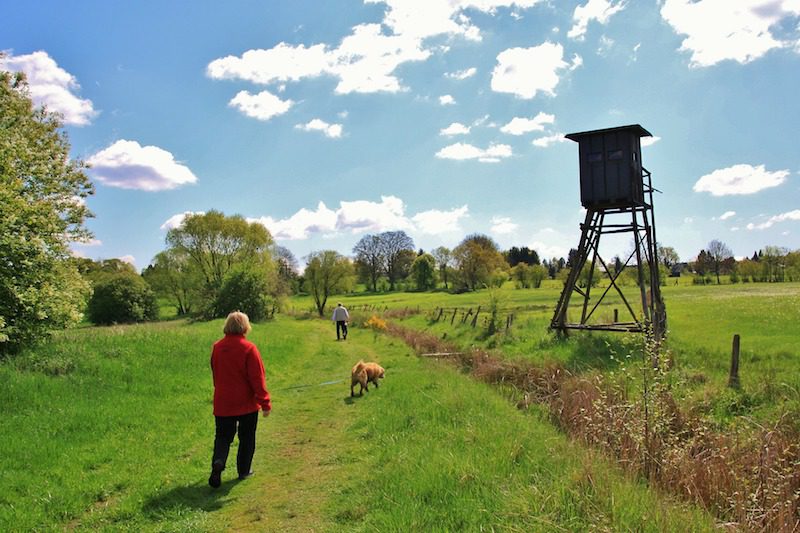
Walking is one of the best forms of exercise, especially for people over 60, says the National Council on Aging, along with just about every doctor we know. Better still? Many say, walking a dog.
Dogs can give us a reason to walk when we otherwise wouldn’t, and their companionship confers health benefits too. But dog walking can also be dangerous for the elderly, if it leads to a fall. A study out this month (March 2019) in JAMA Surgery looked at the incidence of fracture and dog walking, among patients 65 years or older. Their results urge caution.
The authors of the study looked at emergency room data from 2004 to 2017 across 100 hospitals nation wide. Over the years studied they found more than 32,000 incidences of fracture related to falls while walking leashed dogs. The number of fractures also steadily increased each year.
Most fractures occurred in the hip, which the authors point out is of particular importance because of this injury’s association with long term disability and mortality. Women were far more likely to be injured (at nearly 80% of cases) compared to men.
It is important to note that this study only looked at fractures and did not account for less severe injuries or people who didn’t go to the emergency room. This means the incidence of fall-related dog walking injuries is likely higher than their study found.
Does this mean people over 65 should stop walking their dogs?
Not necessarily. Let’s not forget that there are significant health and social benefits to walking a dog. We need to look at the results of this study with that in mind and simply apply caution and use preventive strategies.
The authors recommend dog walkers take actions “such as obedience training to ensure dogs do not lunge while leashed” and choosing “smaller dog breeds for individuals contemplating ownership.” They also point out the importance of risk assessment in patients, especially women, who live alone and have low bone density.
Low bone density is the condition of having lighter and more fragile bones, making them more at risk for fracture. When this becomes severe it is called osteoporosis. You can learn much more about low bone density, how to test for it, and how it can be treated by visiting the National Osteoporosis Foundation. Incidentally, one of the more common recommendations to keep bones strong is to engage in weight bearing exercise—namely, walking.
Separate from the risk of fracture is the risk of falling in the first place. The risk of falling does increase with age, but falls are not inevitable. Falls can be prevented. In addition to taking precautions with your dog like obedience training, you can choose to walk your dog with a friend, take a more level and predictable route, or bring along a walking stick for balance.
Falls are usually caused by a combination of factors, including your environment, poor balance, lack of strength, sensory deficits, and cognitive impairment. Much of this can be addressed with help from your doctor, using treatments like physical therapy, altering medication, getting proper eyewear, and making other behavior changes.
If you own a dog or are considering getting one, it is important to know the risks of walking them on a leash. If you think you might be at risk for a fall or have never had a bone density test, call our office and make an appointment today. We want to help you stay safe AND reap all the benefits of having old Rover.

